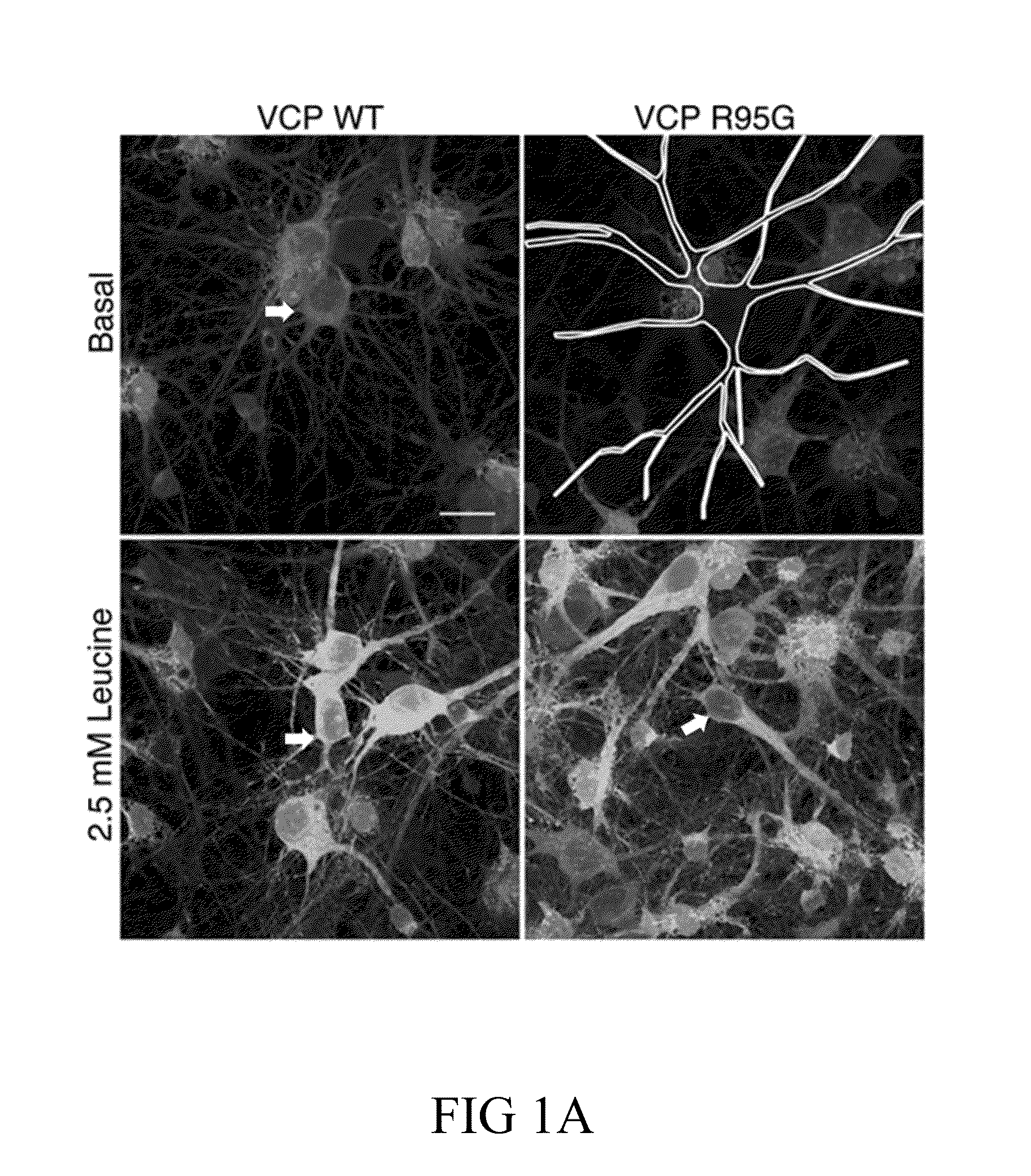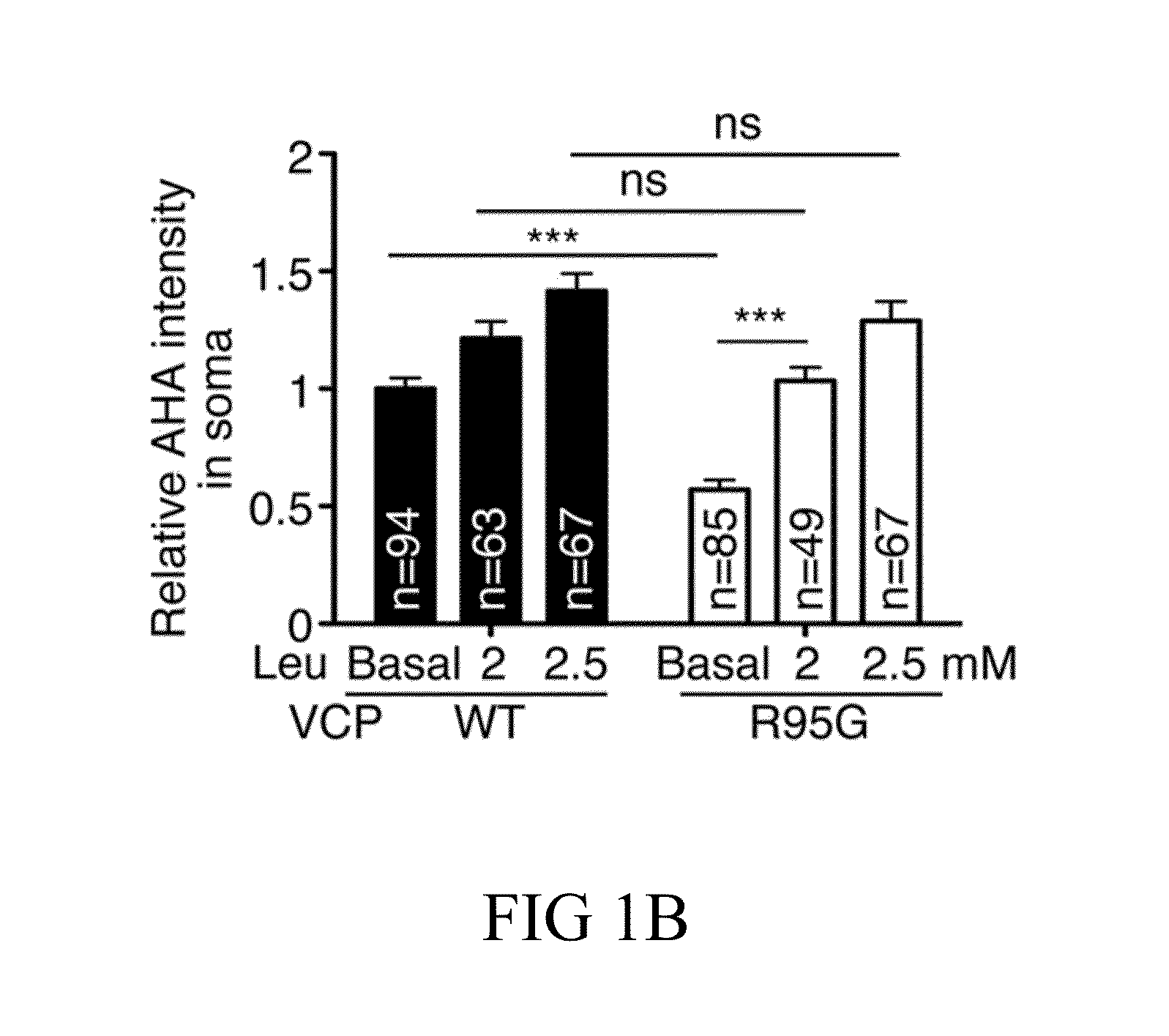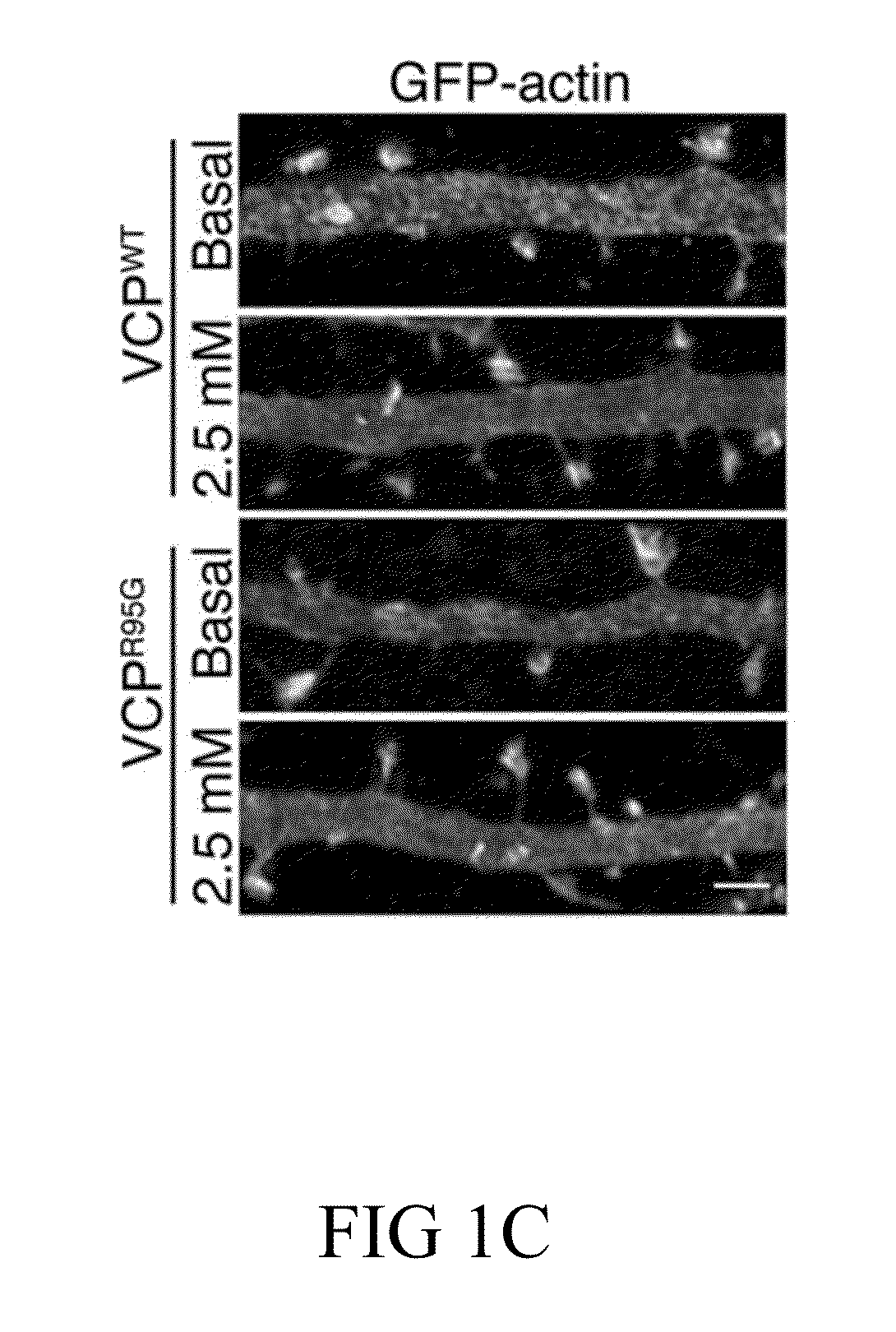Increase of protein synthesis ameliorates synaptopathy-related neurological disorders
a synaptopathy and protein synthesis technology, applied in the field of synaptopathy, can solve the problems of low aha intensity, no effective treatment for als, and low hsp, and achieve the effects of promoting dendritic spine formation, reducing aha intensity, and increasing the number of dendritic spines
- Summary
- Abstract
- Description
- Claims
- Application Information
AI Technical Summary
Benefits of technology
Problems solved by technology
Method used
Image
Examples
example 1
Effect of Leucine on Dendritic Spine Formation
[0090]To evaluate the effect of leucine on dendritic spine formation or density, neurons transfected with plasmids that respectively expressed wild-type VCP (VCPWT) and mutant VCP (VCPR95G) were incubated in a cultural medium in the regular concentration (0.8 mM) of leucine or presence of final 2.5 mM leucine for 3 days. As the data of FIGS. 1A and 1B, compared with VCPWT-expressing neurons, VCP mutation significantly decreased AHA intensity in neurons (***, PR95G-neurons to the level comparable to neurons expressing WT VCP. FIG. 1C are the representative images of dendrite fragments of those neurons. As calculated in FIG. 1D, compared with the VCPWT-expressing dendrite fragment, VCPR95G-expressing dendrite fragment had a lower number of protrusions (***, PWT-dendrite fragment, leucine significantly increased the protrusion number of VCPR95G-dendrite fragment in a dose-dependent manner (**, P<0.01 between basal and 2 mM; ***, P<0.001 bet...
example 2
Effect of Leucine on Cognitive Disorder
[0094]Nf1+ / − mice were used to study the effect of leucine on learning and memory, in which the effect was assessed by contextual fear conditioning as described in Materials and Methods. Briefly, wild-type or Nf1+ / − mice were administered water or leucine, as a supplement in water, for 7 days and then subjected to contextual fear conditioning (FIG. 4A). There was no difference in drinking preference for water or leucine solution between WT and Nf1+ / − mice, nor was there difference in weight gain between the two mice (FIG. 4B).
[0095]In the assessment of contextual fear conditioning, the time freezing of wild-type mice was higher than 40% from day 3 (FIG. 4C). Comparatively, Nf1+ / − mice exhibited a reduced freezing response, which was lower than 40% during the entire task. While leucine supplement did not further enhance the fear memory in wild-type mice, it is worth noting that leucine could significantly increase the associative memory of Nf1+ / ...
example 3
Effect of Leucine on ALS
[0097]SOD1-G93A mouse is an animal model widely used in the art for ALS study. In this example, the SOD1-G93A transgenic mice were used to evaluate the effect of leucine on ALS. As depicted in FIG. 5A, compared to the wild-type mice, dying of SOD1-G93A mice began on day 129, and the survival curve declined steeply to zero on day 153. Administration of leucine supplement significantly increased the percentage of survival SOD1-G93A mice, in which the mean survival time of SOD1-G93A control mice was 147.3±3.84 days, while that of leucine treated SOD1-G93A mice was 172.0±3.96 days (FIG. 5B).
[0098]The data indicated that leucine can significantly prolong the survival time of SOD1-G93A mice.
[0099]In conclusion, the present disclosure provides a method for ameliorating dendritic spine defects caused by the impairment in NF1, VCP, ATL1, or SOD1 through increasing the dendritic spine formation and restoring the dendritic spine density. Accordingly, the present disclos...
PUM
| Property | Measurement | Unit |
|---|---|---|
| weight | aaaaa | aaaaa |
| body weight | aaaaa | aaaaa |
| body weight | aaaaa | aaaaa |
Abstract
Description
Claims
Application Information
 Login to View More
Login to View More - R&D
- Intellectual Property
- Life Sciences
- Materials
- Tech Scout
- Unparalleled Data Quality
- Higher Quality Content
- 60% Fewer Hallucinations
Browse by: Latest US Patents, China's latest patents, Technical Efficacy Thesaurus, Application Domain, Technology Topic, Popular Technical Reports.
© 2025 PatSnap. All rights reserved.Legal|Privacy policy|Modern Slavery Act Transparency Statement|Sitemap|About US| Contact US: help@patsnap.com



